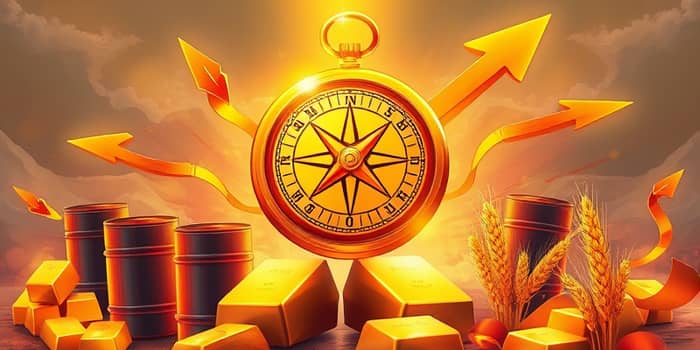
In an era marked by rapid change and uncertainty, understanding commodity markets is no longer optional—it’s imperative. From energy resources fueling our cities to agricultural staples nourishing populations, commodities shape our daily lives. Yet for many traders and investors, these vast markets can feel like an uncharted ocean. This guide serves as your compass, helping you interpret shifting currents of supply and demand to harness opportunity and drive profit.
At their core, commodity markets are platforms where tangible goods and contracts are traded. These markets encompass a diverse range of assets, including oil, natural gas, gold, copper, wheat, and soybeans. By enabling price discovery, hedging, and speculation, they influence global economic activity, inflation, and corporate balance sheets. For newcomers and veterans alike, grasping these fundamentals is the first step toward navigating volatility and capitalizing on emerging trends.
Markets operate through exchanges and over-the-counter platforms, connecting producers, consumers, and speculators. While producers use futures contracts to lock in prices and mitigate risk, speculators provide much-needed liquidity, balancing supply and demand. This intricate dance ensures that prices reflect global conditions—from harvest yields in the Midwest to geopolitical tensions in oil-rich regions.
Commodity prices in 2025 are poised for continued fluctuation. After a cumulative 17% decline over two years, forecasts suggest a further 5% drop as supply growth outpaces demand. Yet within this broad ebb, sector-specific dynamics tell distinct stories:
These trends underscore the importance of agility: strategies that succeeded in a bull market may falter when conditions reverse. Staying informed about macroeconomic data, weather patterns, and policy announcements is critical for timely decision-making.
Supply and demand remain the twin engines of commodity markets. In the oil sector, the interplay between OPEC+ production cuts and robust output from non-OPEC producers creates conflicting forces. While cuts provide temporary price support amid soft demand, surging American shale and Middle Eastern ramp-ups cap any prolonged rally.
Natural gas emerges as a standout: strong industrial consumption and growing export capacity to Europe and Asia fuel what analysts term an unprecedented demand surge in 2025. Conversely, steel markets suffer from chronic overcapacity, where Chinese mill expansions outpace global demand recovery, weighing on iron ore and metallurgical coal.
Understanding these dynamics empowers traders to anticipate inflection points. For instance, monitoring rig counts and storage inventory can reveal hidden imbalances before they manifest in price swings—a critical edge for proactive market participants.
Despite opportunities, significant headwinds loom. A deceleration in global economic growth dampens consumption across energy, metals, and agriculture. Meanwhile, geopolitical flashpoints—from trade disputes to regional conflicts—can instantaneously reroute shipments and ignite price spikes.
Moreover, climate change intensifies weather extremes, rendering agricultural supply chains more fragile. For investors, these factors combine to create a layered risk environment that demands rigorous analysis and flexible strategies.
In volatile commodity markets, experience and discipline are paramount. Veteran traders leverage market inefficiencies and hedging techniques to protect portfolios when trends reverse. Newer investors can harness exchange-traded funds (ETFs) to gain diversified exposure without the complexities of futures contracts.
Key approaches include:
Regardless of vehicle, diligent risk management—position sizing, stop-loss orders, and scenario analysis—remains the bedrock of long-term success. Building a robust toolkit of technical indicators, fundamental reports, and sentiment data equips traders to navigate choppy waters with confidence.
As we peer beyond 2025, technological advancements and the global push toward sustainability will reshape commodity markets profoundly. Renewable energy integration, battery storage breakthroughs, and blockchain-enabled supply chain transparency promise to alter demand curves and trading paradigms.
For metals critical to clean energy—lithium, cobalt, nickel—demand could outstrip supply for years, presenting a rare bull market within a broader commodities slowdown. Agricultural markets may also benefit from precision farming and vertical agriculture, increasing yields and reducing environmental footprints.
Ultimately, success hinges on perspective. By viewing the commodity market as a living ecosystem—driven by human needs, geopolitical drives, and technological leaps—investors and traders can align their strategies with larger trends. Equipped with the insights and frameworks in this compass, market participants can transform uncertainty into opportunity, steering toward profitability even amidst the fiercest economic storms.
References













